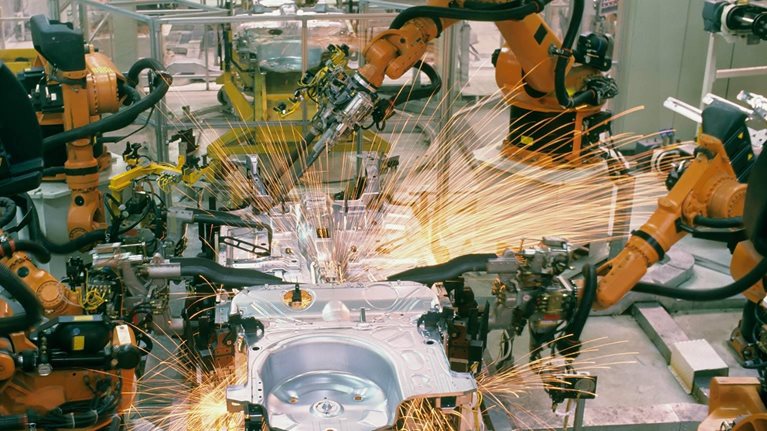The news that several manufacturing giants are planning to bring some of their production back to the United States has dominated the headlines in recent months. Perhaps that's because Americans see it as a bellwether of economic recovery, or perhaps it simply reflects their collective yearning for America's past industrial dominance. Either way, the interest in these moves demonstrates the unique hold that manufacturing has on the public imagination.
But precisely because it captures our imagination, a powerful belief system has grown up around manufacturing that limits the policy debate as well as the range of strategic options Americans are willing to consider. This will need to change if U.S. business leaders and policymakers are going to make the most of emerging opportunities. Meanwhile, the global manufacturing sector continues to diversify and evolve in surprising ways -- as the return of some manufacturing production to the United States indicates. Understanding this evolution is the key to the future.
Indeed, we see the potential for a new era of manufacturing growth, fueled by innovation as well as new sources of demand. But we also see an era that is fraught with new challenges that call for strategies and policies based on actual knowledge of manufacturing -- not blind faith in conventional wisdom. Here are six things you need to know about the future of manufacturing.
1. Manufacturing is dynamic
The role of manufacturing in any economy isn't static. By providing the tools to raise agricultural productivity, build critical infrastructure, and lift populations out of rural poverty, manufacturing remains the clear path to economic development. But once countries climb from developing to middle-income status (around $10,000 in GDP per capita), their economies become more diverse. At later stages of development, more consumers can afford to spend money on services, making that sector the fastest-growing sector in the economy.
Moreover, as wages rise, manufacturers must increase productivity in order to sustain their profits. As a result, manufacturing's share of GDP peaks at 20 to 35 percent in middle-income countries and then falls, following an inverted U curve. Today, manufacturing represents 12 percent of GDP in the United States, 18 percent in Germany, and 33 percent in China.
As they recover from the Great Recession, some advanced economies may see a rebound in hiring in manufacturing. Some might even see moderate export gains. But because of continuing improvements in productivity, the faster growth of service sectors, and the focus on higher-skilled jobs, manufacturing's share of overall employment will remain under pressure.
2. Manufacturing still has a productivity and innovation edge
Even as manufacturing's contribution to growth slows in advanced economies, the sector continues to make outsize contributions in productivity, innovation, and trade. In the United States, for example, manufacturing contributes more than twice the expected rate of productivity growth for its level of GDP and employment. One result of this productivity advantage is a massive consumer surplus. While services counted in the U.S. Consumer Price Index have risen by more than 150 percent over the past 25 years, prices of consumer durables (like cars and refrigerators) have risen by one-tenth of that rate.
Even as advanced economies have shifted toward services, manufacturing continues to lead in innovation. In advanced economies, manufacturing companies fund as much as 90 percent of private-sector research and development. Finally, manufacturing continues to dominate global trade: 70 percent of global exports are manufactured goods. These contributions -- in productivity, innovation, and exports -- strongly influence global competitiveness.
3. Manufacturing and services are more intertwined than you think
The notion that manufacturing and services are two completely different economic realms has become increasingly anachronistic. Much of what goes into getting a new kind of soap on the supermarket shelf or putting a new car in the showroom requires a growing number of services. Today in the United States, for every dollar of output, manufacturers purchase 19 cents of services -- everything from trucking and logistics to advertising.
Moreover, more than one-third of manufacturing sector employees work in service-type jobs, such as design, marketing, and office support. In globally-traded high-tech industries like semiconductor manufacturing, the number is more than half. If all the service jobs created by manufacturing outsourcing are counted, manufacturing employs more service workers in the United States (9 million) than production workers (7 million). Meanwhile, some service industries are beginning to resemble manufacturing in the way they compete globally and contribute to exports.
4. Manufacturing is diverse
A full understanding of manufacturing means knowing the subsectors. Manufacturing is not monolithic, and one-size-fits-all approaches -- by manufacturing leaders and by nations -- are not likely to succeed. We break manufacturing into five broad categories based on how labor, capital, or research and development (R&D) intensive they are, and how dependent they are on low-cost transportation or high-skill talent. The five categories vary considerably in sources of competitive advantage and necessary conditions for success.
The largest group, which accounts for 34 percent of manufacturing value added, we call "global innovation for local markets." It consists of industries, such as automotive and pharmaceutical manufacturing, in which companies compete by introducing a steady stream of new products, features, and models, but also must operate in or near end markets, often because of governmental regulations (e.g., drug safety standards).
The next biggest group, "regional processing," is closely tied to local markets. Food companies, for example, need to cater to local tastes and ensure freshness. Only two of the groups are heavily traded: "labor-intensive tradeables" (apparel and toys, for example) and "global technologies," which includes electronics, a high-tech industry that relies on low-cost assembly. The difference in subsector performance can be stunning. Advanced economies, for example, run a surplus of $726 billion in goods from the "global innovation for local markets" group and a $342 billion deficit in "labor-intensive tradeables."
5. The future consumers are in the developing world
Manufacturing is entering a dynamic new phase. Over the next 15 years, McKinsey projects that 1.8 billion people -- mainly in developing economies -- will join the global consuming class, bringing the total number of people with disposable income to around 4 billion and raising annual consumption to $64 trillion. By 2025, we project that emerging markets will account for fully half of global consumption. These new consumers will demand everything from mobile phones to soft drinks, expanding markets for established manufacturers that can figure out how to compete for these new customers.
At the same time, scientific innovation will undoubtedly produce new kinds of products, change how they are designed and made, and enable companies to meet the needs of consumers and business customers more quickly, with more tailored products, and with new forms of after-sale service. Innovations in production methods will also likely enable manufacturers to make new goods with less material or with recycled material, thereby reducing greenhouse gas emissions.
6. Old ways of thinking about manufacturing are increasingly risky
The manufacturing opportunities of the post-Great Recession world are considerable, but making the most of them will require changing old ways of thinking. Not only do manufacturers have to figure out how to serve billions of new consumers, they also need to meet the growing demand for variation, customization, and after-sales service. At the same time, manufacturers must navigate a minefield of new uncertainties -- including volatile resource costs, greater supply-chain risks, upward wage pressures, and the difficulty of locating high-skill labor.
In the coming era, following the path of low-cost labor -- as numerous multinationals did in the 1990s and 2000s -- is unlikely to pay off. Manufacturers will need to carry out nuanced, multi-factor analyses of all the issues that affect landed costs (what it costs to bring a product to market), including risk. Likewise, policymakers and business leaders will need to understand exactly how their industries respond to changes in factor inputs (like rising energy costs) in order to make effective strategy and policy decisions. A one-size-fits-all manufacturing policy will not suffice.
This article originally ran in Foreign Policy.


